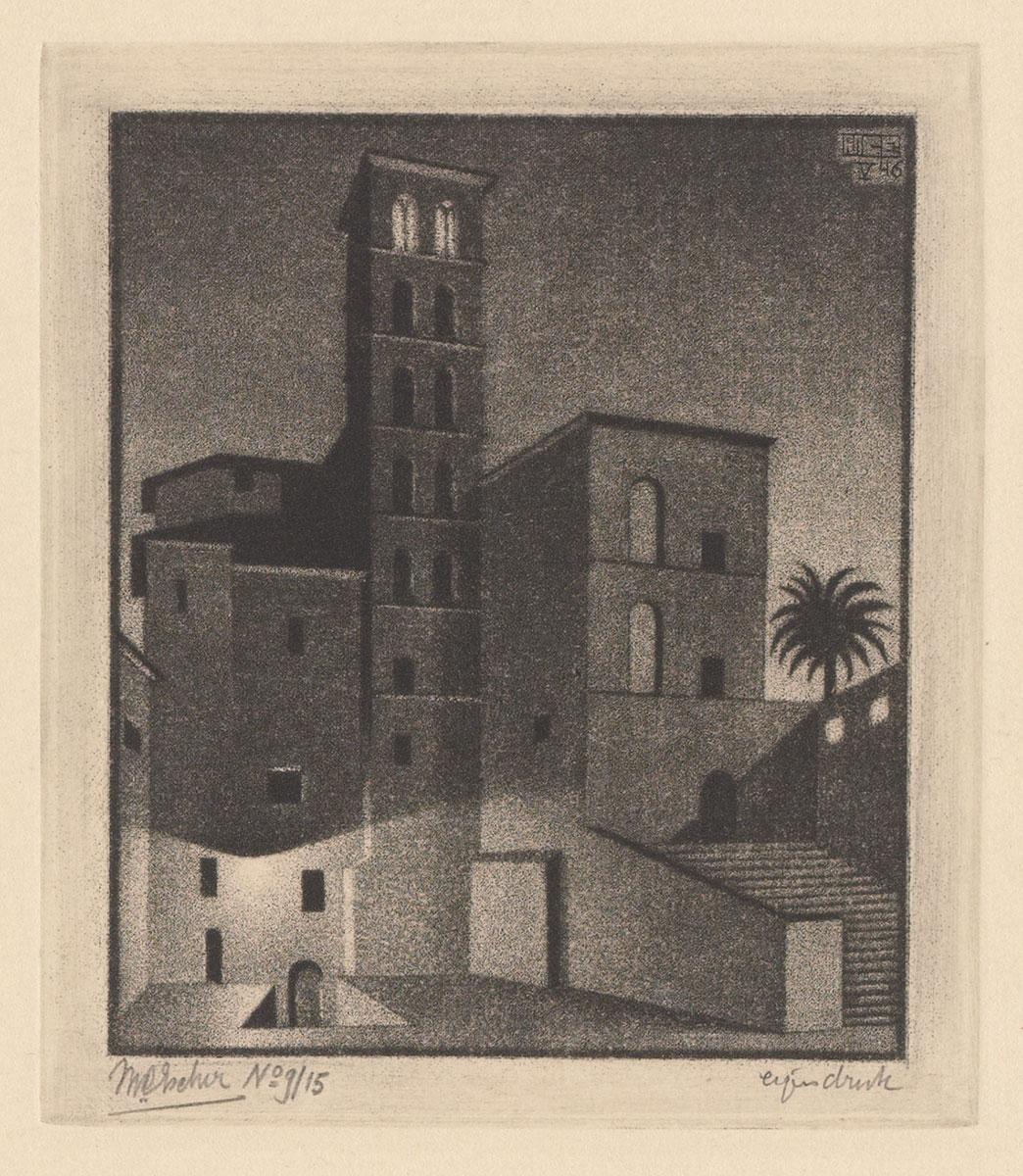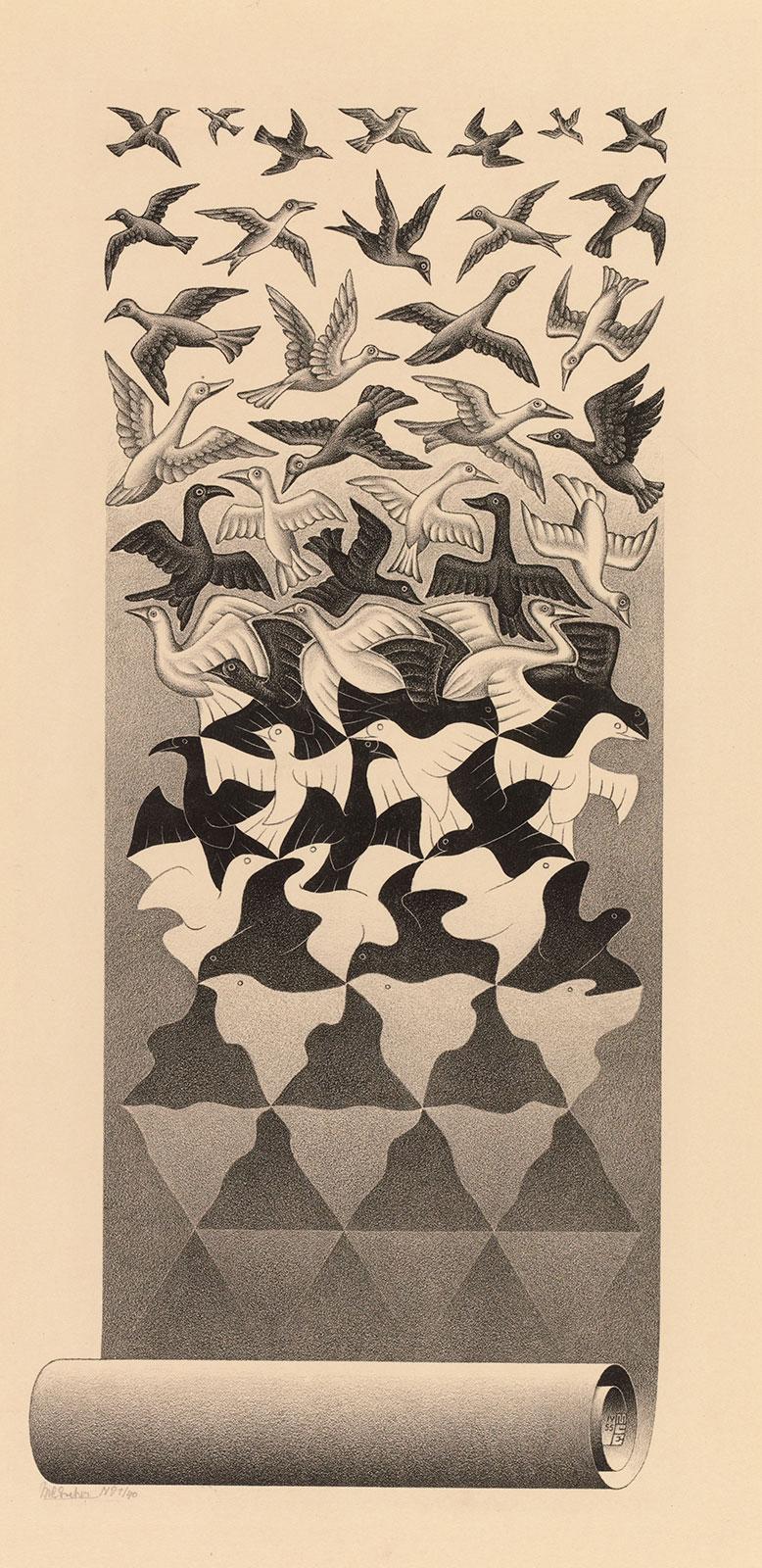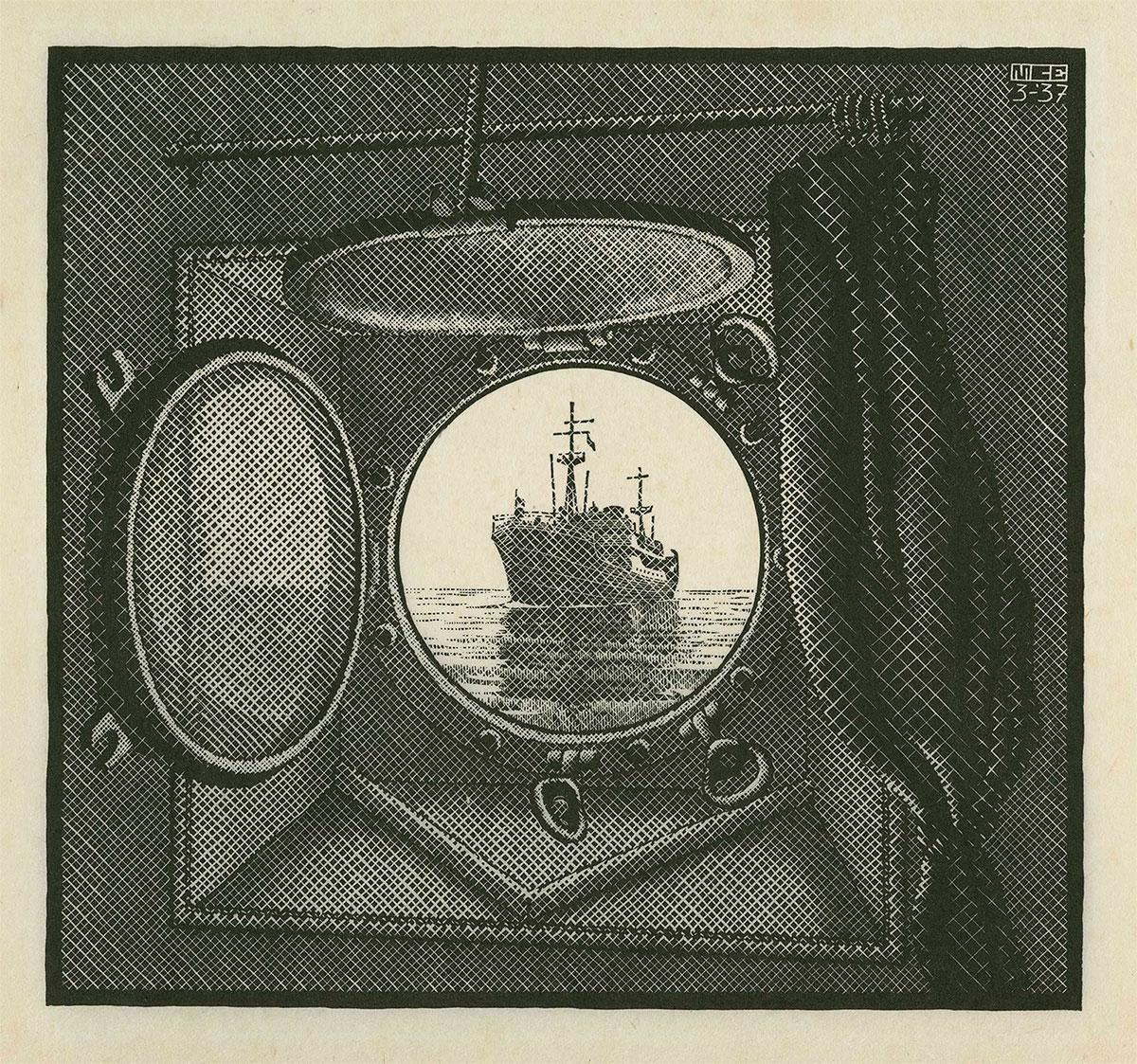

During 1937, 1938 and 1939 Escher became increasingly fascinated by tessellations, cycles and transformations. In a short time, he produced Metamorphosis I, Development I, Day and Night, Cycle, Sky and Water I and II and Development II. Most of them are woodcuts. Cycle, from May 1938, is the only lithograph.
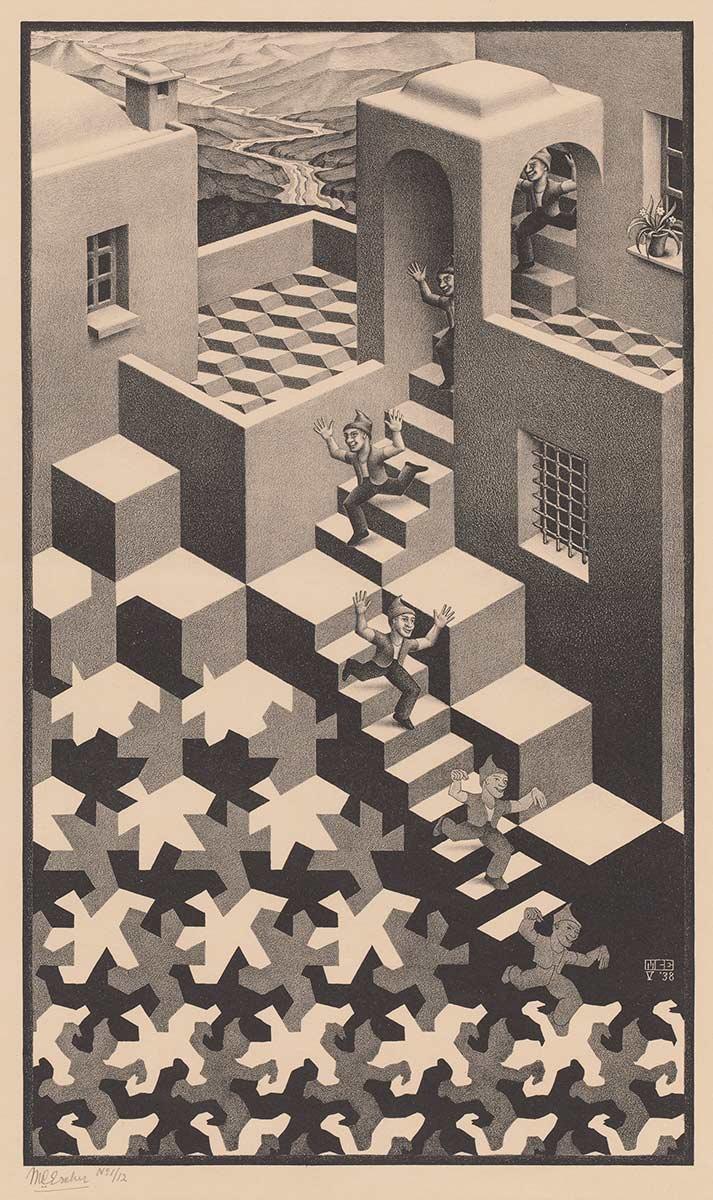
On October 30, 1938, Escher wrote to Hein 's Gravesande*:
'In the last few months I already created a few other woodcuts and just finished a lithograph , prints that are all expressions of my search for the new direction in which I feel driven, and which is certainly a completely different one than the one I used to go in. I myself consider (in my latest prints) the technique to be of little importance. In other words: I don't much care about which technique I'm using. The fact that I chose the woodcut as a means of venting my thoughts (in the case of Day and Night) is more due to considerations of a practical nature than any other. I believe that the lithograph, with its capabilities of many grays, would lend itself better to my present work, but of the lithograph I am not "sure" enough, that is, the printing as a result is too susceptible to failure and the printing costs are high, while in the woodcut I know what I can do. I can make large-format prints from the board itself and at no cost (although such a print takes a lot of time, look at Day and Night, for example) . I would prefer to express myself in the "black art" technique with its beautiful velvets and deep grays and blacks - but where could I learn that technique (who still does it nowadays?). And how long would it take before I can work in it properly?
I will have to limit myself mainly to the woodcut, although I do not consider it in any way an ideal graphic technique for my particular case. The easiest way would of course be to make an ordinary "drawing", that is to say unique, but I have gradually become too "graphic" for that purpose: the multiplication, the "multiplicity", which already has a predominant place in the subject of my work, is too much in my blood.'
It is therefore not only the works themselves that Escher created in this period that indicated a new direction. He was aware that a change was coming, too. Thematically, but also in terms of technique. Although he regularly changed between wood and stone, the lithograph continued to hold something elusive to him. Nevertheless, he would continue to practise lithography in the following decades, with often brilliant results. Later, Escher would experiment with the mezzotint (the "black art" technique), but he wouldn't pursue this for long. At the same time, this letter fragment is also a testimony to his "nature": he is a printmaker in heart and soul.
In Cycle, a little man emerges from a gate, carefree and happy. He runs down the stairs, not knowing he will disappear at the bottom and dissolve into an erratic geometric pattern. But this metamorphosis is not yet the end. Towards the upper left corner, the pattern changes into simpler shapes, into cubes, then becomes architecture and finally resurfaces as terrace tiles. Hidden somewhere, they have transformed again into the little man, after which the cycle begins again. The hilly landscape at the top is intended to create the starkest possible contrast between the three-dimensional liberated reality and the restrictions in the two-dimensional pattern at the bottom.
Read more about Cycle and other perpetual motions in the story Perpetuum Mobilé.
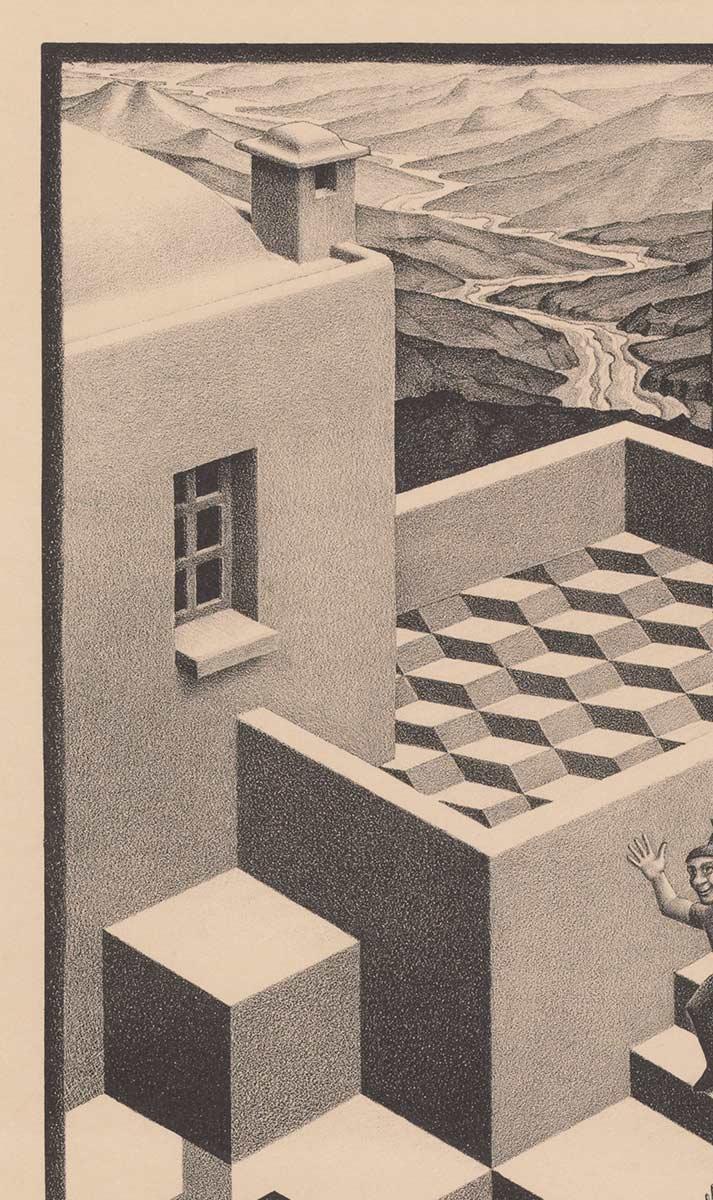
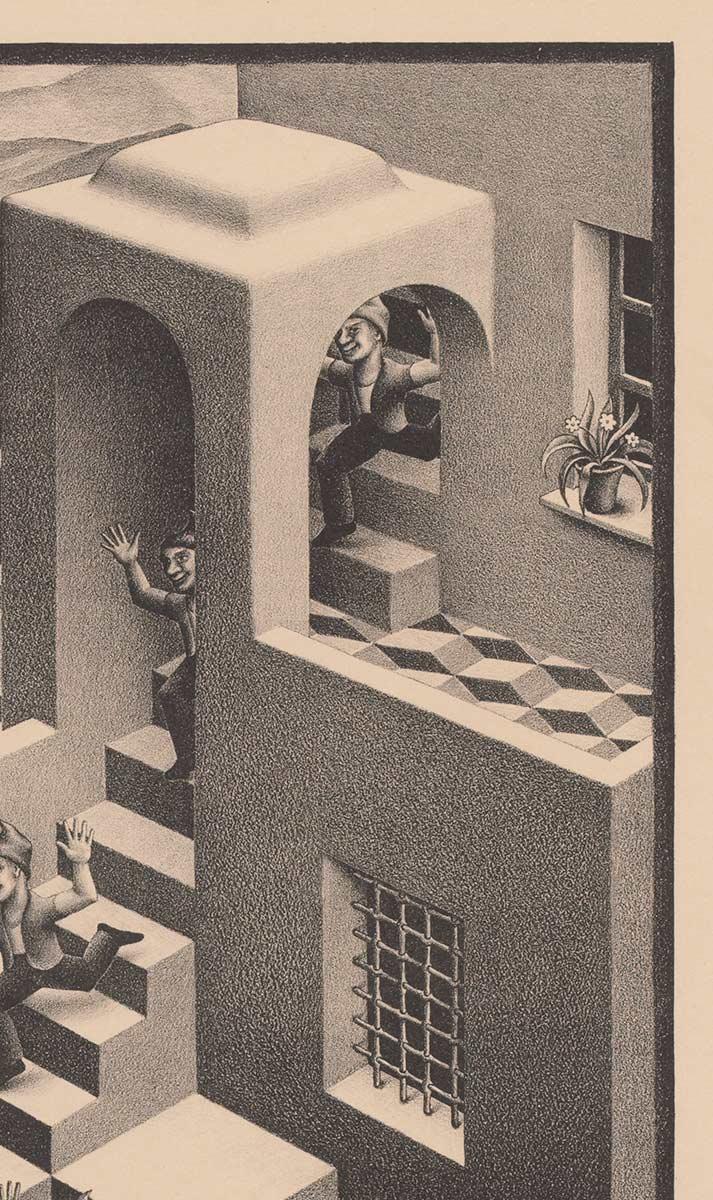
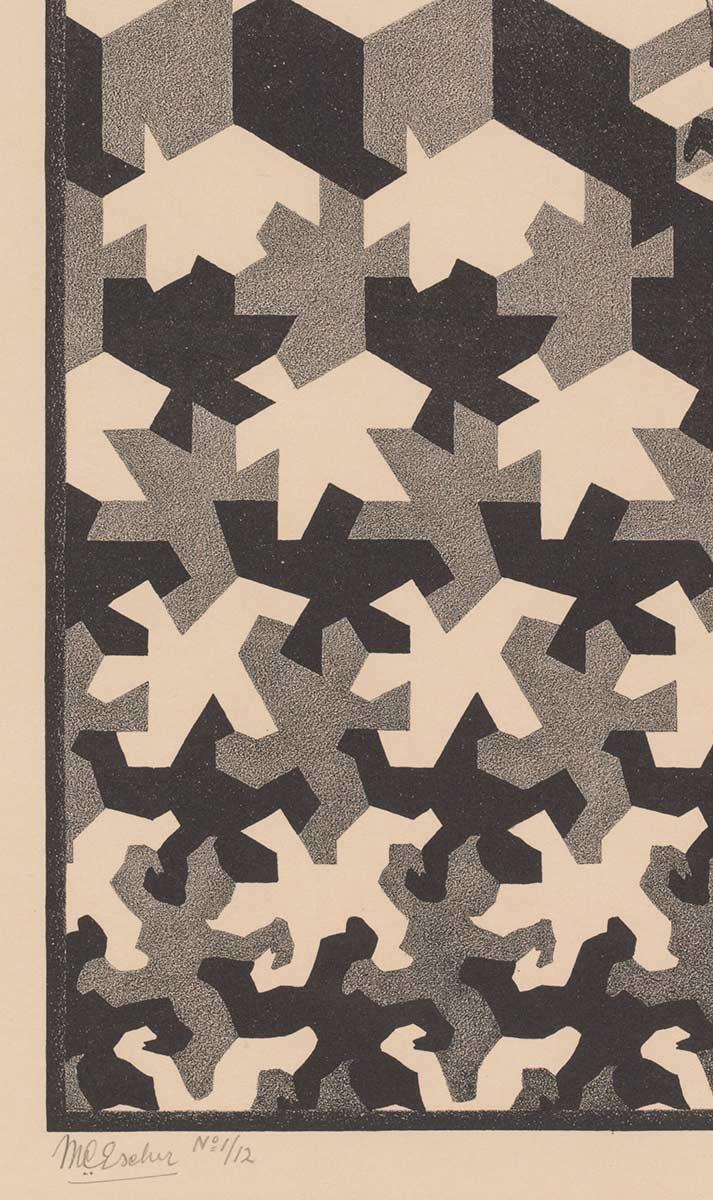
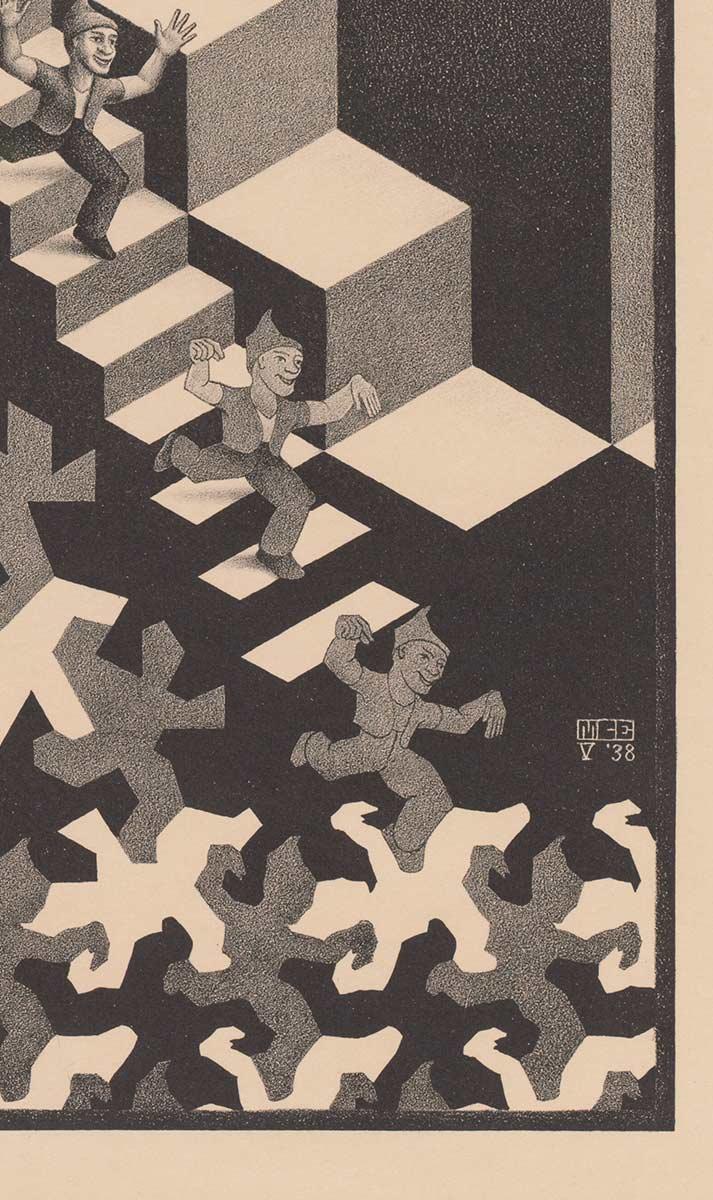
Source
[*] Wim Hazeu, M.C. Escher, Een biografie, Meulenhoff, 1998, page 250
More Escher today


